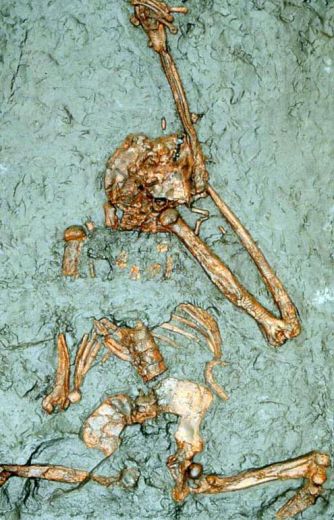HOME • FIUME SANTO PUBLICATIONS • FIUME SANTO FAUNAL LIST • RHOI PROJECTS • MAP

Fiume Santo, Italy
11 - 4 Ma
This locality represents the westernmost documentation of the Tusco-Sardinian palaeobioprovince, which was in existence during the late Tortonian in the North Tyrrhenian area. During the Tortonian, the region that presently corresponds to southern Tuscany and the Sardinian Massif (Central Italy) was occupied by a complex of large islands characterised by endemic vertebrate populations. Morphological features, adaptations and trophic structure (e.g. low diversity and scarce carnivore taxa), mainly in the mammal faunas, attest to a long period of isolation from the continental palaeobioprovinces of the Mediterranean and Central Europe. The greatest numbers of fossil remains of the well-known endemic Oreopithecus fauna of the so called V0–V2 assemblages, are found at several sites in southern Tuscany (e.g. Montebamboli, Casteani, Baccinello). In Sardinia this endemic fauna occurs only at the Fiume Santo locality, from which 11 taxa have been recognized: Crocodylia indet., Chelonii indet., Oreopithecus bambolii, Mustelidae indet., Eumaiochoerus cf. E. etruscus, Umbrotherium azzarolii gen. et sp. nov., Tyrrhenotragus gracillimus, Bovidae gen. et sp. indet. (?Neotragini), Maremmia cf. M. lorenzi, Etruria viallii gen. et sp. nov., Turritragus casteanensis gen. et sp. nov. Analysis of these fossils and comparison with material from localities in Tuscany has led to a re-evaluation of the latter and to the description of three new endemic taxa among the ruminants.